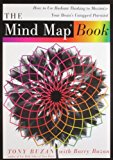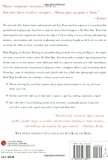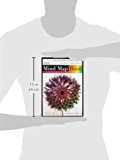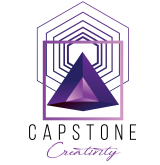I very believe in book outlines and spend months on them. Right after I have made an outline for a book, the writing is considerably simpler. All I have to do is flesh in the outline with concise, clear, and memorable words. For my next book, however, I will use a diverse method.
This strategy is based on thoughts-mapping, a visual, colour-coded representation of content. Given that I am a visual individual (I have a graduate degree in art), the approach appealed to me. I study a number of Internet articles about mind-mapping and believed I was prepared to commence. But I discovered there was a lot more preparation perform before I produced my map.
Susan C. Daffron describes some of this work in her Internet write-up, “How to Develop an Outline for Your Non-Fiction Book,” published on the Logical Expressions site. Very first and foremost, the author has to figure out the purpose of the book. “You can not create one thing as lengthy as a book without figuring out the large picture,” she explains.
Right after I study that sentence I realized I was in difficulty. Even though I had come up with a title, it was not as good as I hoped, so I brainstormed on other titles. Every single contains an active verb. Instead of finalizing the title, I began a computer file, and will appear at the list once more in a few weeks.
I have even gone so far as to discover three royalty-cost-free cover images that symbolize my book. This book comes from knowledge and I have a good idea of the chapter titles. Nevertheless, I continue to study my topic.. Printouts of Web articles and notes to myself are stored in a large bin that will hold added sources.
Judy Collins lists the mind-mapping branches of a nonfiction book in her Internet post, “Book Chapters — Organize and Outline with Mind-Mapping,” posted on the Hub Pages website. The book title is in the center of the web page and branches come out from it. There are 4 main branches: the hook, or introduction, the idea (which she calls a thesis), the rewards, and lastly, the conclusion. Every branch is a various colour.
Chapters must close with “a final sentence that characteristics the advantages in the subsequent chapter to invite the reader to want to preserve reading,” writes Collins.
When you run into difficulty, as I have with my outline, Allen Bohart, author of “Writing a Book Outline,” posted on the Search Warp site, says you need to get in touch with time out. “Taking a step back and reviewing your book outline will allow you to get back on track,” he explains. So I have taken a step back and am performing some Roman numeral outlining, a hybrid of the old strategy and new thoughts-mapping.
This method is functioning for me and it could perform for you. When I have a physique of research, I will draw my map and see if it represents the book in my thoughts. A year from now I hope I have a function of art, a mixture of very good information and excellent writing.
Copyright 2010 by Harriet Hodgson
http://www.harriethodgson.com
Harriet Hodgson has been an independent journalist for 30+ years. She is a member of the American Society of Journalists and Authors, Association of Health Care Journalists, and Association for Death Education and Counseling. Her 24th book, “Smiling Through Your Tears: Anticipating Grief,” written with Lois Krahn, MD is available from Amazon.
Centering Corporation has published her 26th book, “Writing to Recover: The Journey from Loss and Grief to a New Life” and a companion journal with one hundred writing jump-begins. Hodgson is a monthly columnist for the new “Caregiving in America” magazine, which resumes publication in August. She is also a contributing writer for the Open to Hope Foundation website. Please check out Harriet’s web site and understand more about this busy author and grandmother.
The Thoughts Map Book: How to Use Radiant Thinking to Maximize Your Brain’s Untapped Possible

Item Description
THE INTERNATIONAL BESTSELLER
The possible of the human brain is phenomenal, and Tony Buzan has been a pioneer in researching that prospective and helping men and women find out how to make the most of their brainpower. The Mind Map Book is his most crucial and comprehensive book on the subject. It offers thrilling new ways of utilizing and enhancing memory, concentration, and creativity in arranging and structuring thought on all levels, in order to accelerate the potential to learn, bear in mind, and record data.
Thoughts Mapping and Radiant Thinking are groundbreaking methods of accessing intelligence, developed more than a lot of years by the author, and here he provides a complete operating manual for all who want to use their brains to their fullest potential. It is a process currently employed with extraordinary achievement by multinational corporations, top universities, champion athletes, and outstanding artists. Featuring a variety of stimulating excercises and a lavish collection of complete-colour photographs and original Mind Maps that illustrate the method, it shows you precisely how to:
• Mirror and magnify your brain’s pattern of perception and association in the way you find out, think, and generate
• Quickly master the right way to take notes, organize a speech, a writing assignment, a report
• Join with other individuals to pool thinking productively, memorize a mammoth amount of information, totally free your ideas to grow and expand constantly in depth and dimension
With 84 illustrations in full colour and 44 in black and white
Value: $14.31





